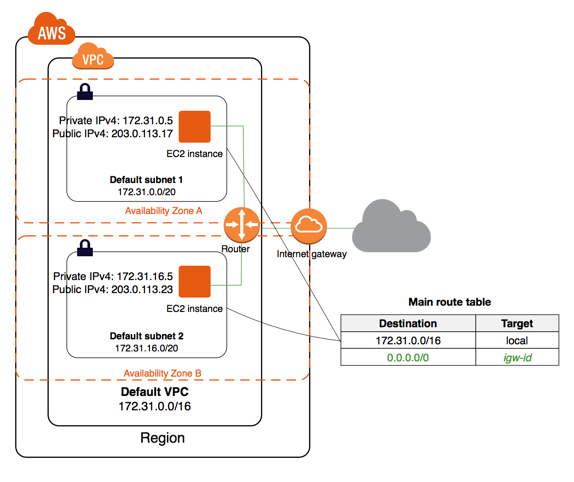One way to signal to the cloud and labor markets that you have a broad understanding of cloud computing is to pass the Amazon Web Services Cloud Practitioner Exam.
Studying for this test can range from easy to moderately challenging depending on your technical and professional background.
I recently allocated five business days to studying for and taking the Amazon Web Services Cloud Practitioner Exam.
During this week I increased my understanding of cloud computing, AWS specific products, and the cloud market.
And I want to pass these lessons on. If you want to take this exam – or are considering it – my experience may be of help to you.
Lesson #1: Know What is Tested and Why
Understanding what an exam tests and what it does not test is important.
Firstly, know the mechanics of the test. How is the exam given? When is the exam offered?
Secondly, know the composition of the test. How is it scored? What types of questions are asked?
COVID-19 has changed how the test is administered, and my test was proctored remotely. I used my personal computer at home to complete it.
In order to pass the exam, you need a score of 70% or higher. The questions were largely multiple choice but there were multi-select prompts as well.
At its core, the exam tests if you have a sufficiently strong understanding of cloud computing to be a practitioner in the field.
This means that your baseline knowledge of core concepts will enable you to engage with AWS customers, partners, or other relevant stakeholders.
It also validates an examinee’s ability to explain the value of the AWS Cloud, understand the AWS shared responsibility model, and comprehend AWS Cloud security best practices.
Cloud computing is the practice of using a network of remote servers hosted on the Internet to store, manage, and process data, rather than a local server or a personal computer.
This definition (and how Cloud technologies are deployed and managed) comes up repeatedly.
The exam also tests your working knowledge of design standards (i.e. reliability, scalability, and the durability of cloud technology) and specific technologies (Virtual Private Clouds, Subnets, Networking Access Control Lists, and so on).
Lesson #2: Don’t Fear the Exam
Many professionals taking the exam have – to put it mildly – mild anxiety heading into test day. That is because the exam does ask some technical questions.
But fear not!
President Franklin Roosevelt declared in his First Inaugural Address that “the only thing we have to fear is fear itself”. Those words certainly hold true for the Cloud Practitioner Exam.
The exam doesn’t ask you to write software or deploy or use Python to architect cloud configurations. So relax :)
By taking time to prepare and learn the suite of AWS products, how they work, and why companies benefit from these tools, you will be well served on exam day.
Lesson #3: Prepare
Amazon’s CEO Jeff Bezos noted that “a brand for a company is like a reputation for a person. You earn reputation by trying to do hard things well.”
If you have not taken an exam in a long time (let alone a professional certification), you might be unsure of how to start preparing.
Use the Cloud Practitioner Exam as a platform by which to work hard and lean in to learning new things.
Going into the exam, I was familiar with a number of AWS’s core products: Amazon Elastic Compute Cloud, Simple Storage Service, and Relational Database Service to name a few. And having built my financial technology startup Pennybox on AWS services certainly helped.
But there were many products I had yet to discover. I needed to learn these.
Some had Greek names (Athena, Kinesis) and others were composed of unfamiliar acronyms (QLDB, SQS, SNS to name a few). I kept a running document in an effort to best remember each product.
Learning new concepts and ideas can be challenging.
But in the process of doing hard things you can develop a reputation as a resourceful learner and someone who brings strong thought leadership to the table.
When you pass the exam you will be proud to have earned that reputation.
Lesson #4: The Devil is in the Details
When taking the AWS Certified Cloud Practitioner exam you need to understand Amazon’s core cloud products, how they operate, and the ways in which they work together.
One area that I needed to invest more time in was cloud security.
I learned that AWS is certified as a PCI DSS 3.2 Level 1 Service Provider, the highest level of assessment available for the Payment Card Industry Data Security Standard.
This knowledge led me down a curiosity rabbit hole.
I started visiting websites, like the accounting SaaS company Freshbooks, to see how they accept payments and how those payments are securely transacted.
Needless to say, the details matter.
I also needed to brush up on Virtual Private Network technology and, more broadly, how connectivity works between private and public networks.
For example, I learned that a VPN is created by establishing a virtual point-to-point connection through the use of dedicated circuits or with tunneling protocols.
Lesson #5: Let Core Concepts Guide You
The exam tests computational concepts. These concepts are tied to general paradigms in security, pricing, networking, and infrastructure.
I found it very useful to diagram AWS architectures.
I picked from among the best whiteboards online to write out solutions by hand.
My whiteboard helped me enter exam day with greater confidence and the ability to visualize how AWS products work.

Without knowing the names of all the products that AWS builds, you can still easily get a sense that Amazon wants users and companies to have a flexible, secure, reliable, and scalable experience with cloud technology.
For example, take a look at this sample question:
A company needs to migrate their website from on-premises to AWS. Security is a major concern for them, so they need to host their website on hardware that is NOT shared with other AWS customers. Which of the following EC2 instance options meets this requirement?
Without seeing potential choices, what sounds like a reasonable answer?
To paraphrase this question, this company is looking for a server that they alone have access to.
In AWS terminology such a server is called a “Dedicated Instance”.
And just like that, you have earned a point.
See, it’s not that hard, right?
Lesson #6: Practice
There are three ways to practice for the exam: read whitepapers that Amazon publishes, take practice tests, or use actual AWS products to gain firsthand experience with the services.
Deploying a combination of all three approaches will likely yield the best results.
There are affordable courses offered by aCloud Guru and Udemy to help you take and review practice questions. And Andrew Brown offers free prep courses on the freeCodeCamp YouTube channel.
Another approach, and one that I find preferable for deeper learning, is to set-up and run a test environment in AWS itself. Why? Because this will give you firsthand exposure to how products operate and interact.
By creating an AWS account you will have root access and can provision users and products easily. This experience will likely lead to more indelible mastery of the core concepts.
Lesson #7: Enjoy Exam Day and Remember Why You are Taking the Exam in the First Place
The exam is 90 minutes long and you are notified at its conclusion if you passed. You must wait a few days to get your actual numerical results.
If you are just starting this journey, try to enjoy it.
Unlike the GMAT, which I had to take for business school and which teaches concepts that infrequently appear in my everyday life (although I do remember that 2 is the smallest prime number), the AWS Certified Cloud Practitioner exam is both practical and relevant.
If you work in cloud technology, this exam will help you earn customer trust by demonstrating foundational knowledge.
The cloud computing market is growing rapidly. Cloud technology will continue to shape our digital economy for years to come.
According to research conducted by Lolly Co, tapping into this technological age isn’t just about producing new goods and services. By using digital solutions that streamline business processes, companies can elevate efficiency, lower costs, and remain competitive via customer experiences.
Understanding the technological underpinnings of these changes is worthwhile and exciting.
I used the exam as a platform to deepen my understanding of how this world works. You can do the same.
AWS is constantly evolving and adding new products and services. So my own learning path continues.
Studying AWS and the core pillars of cloud technology will serve you well on exam day and, most importantly, beyond.
